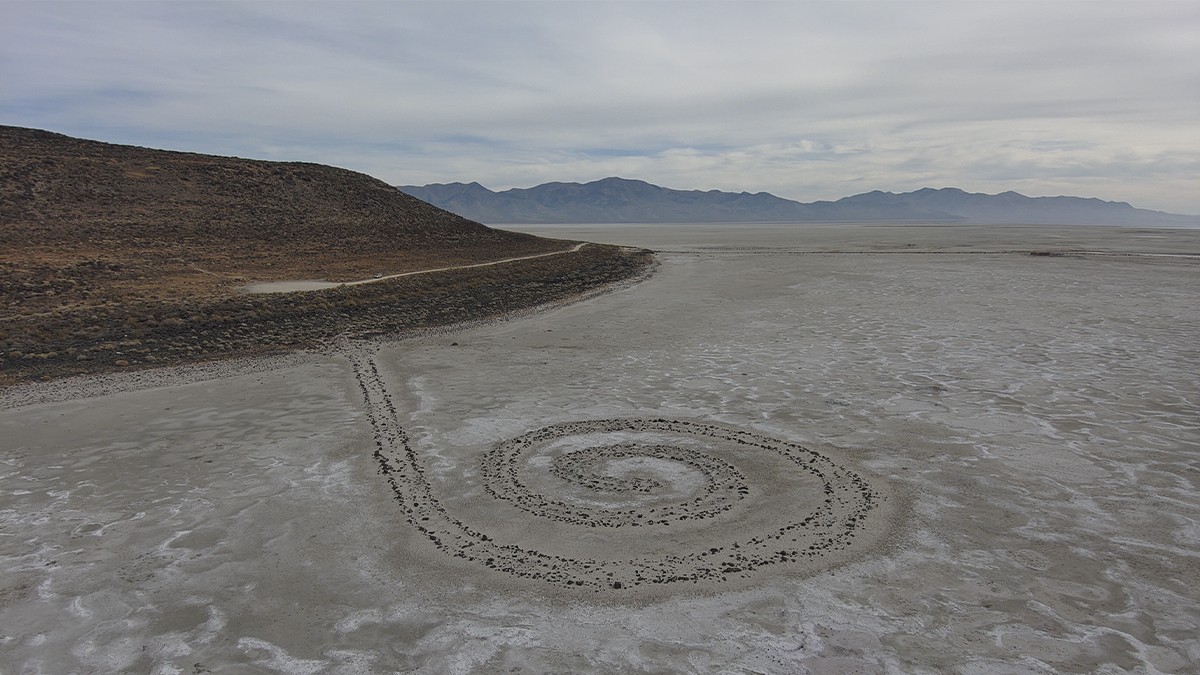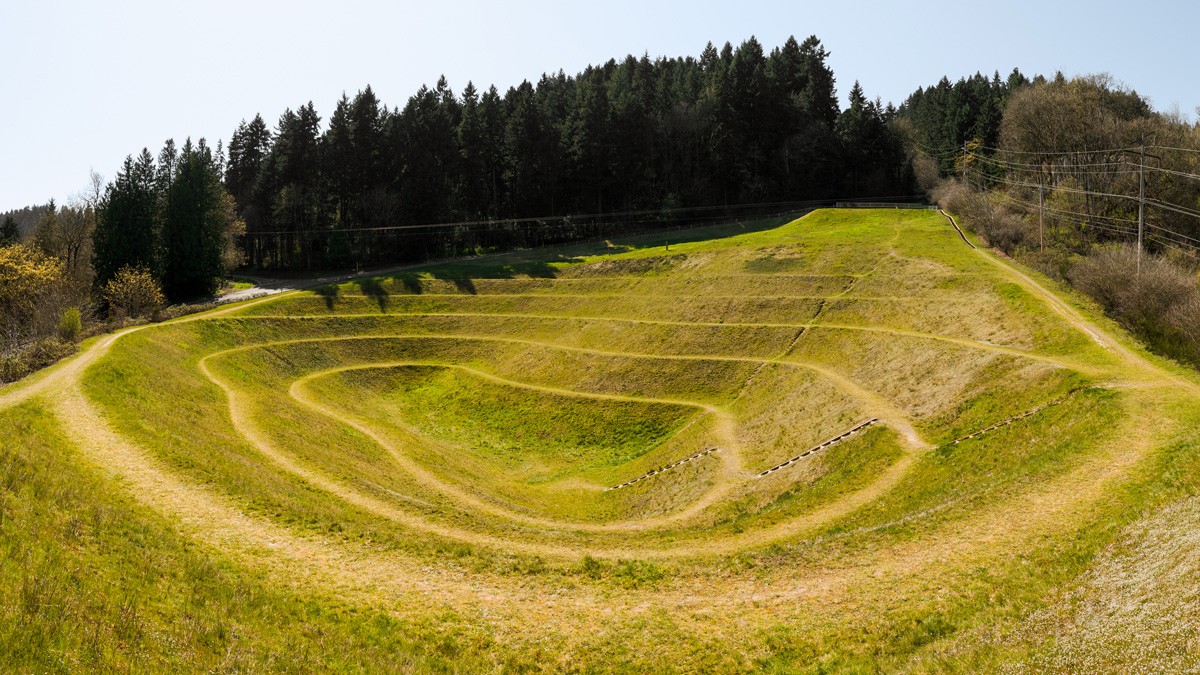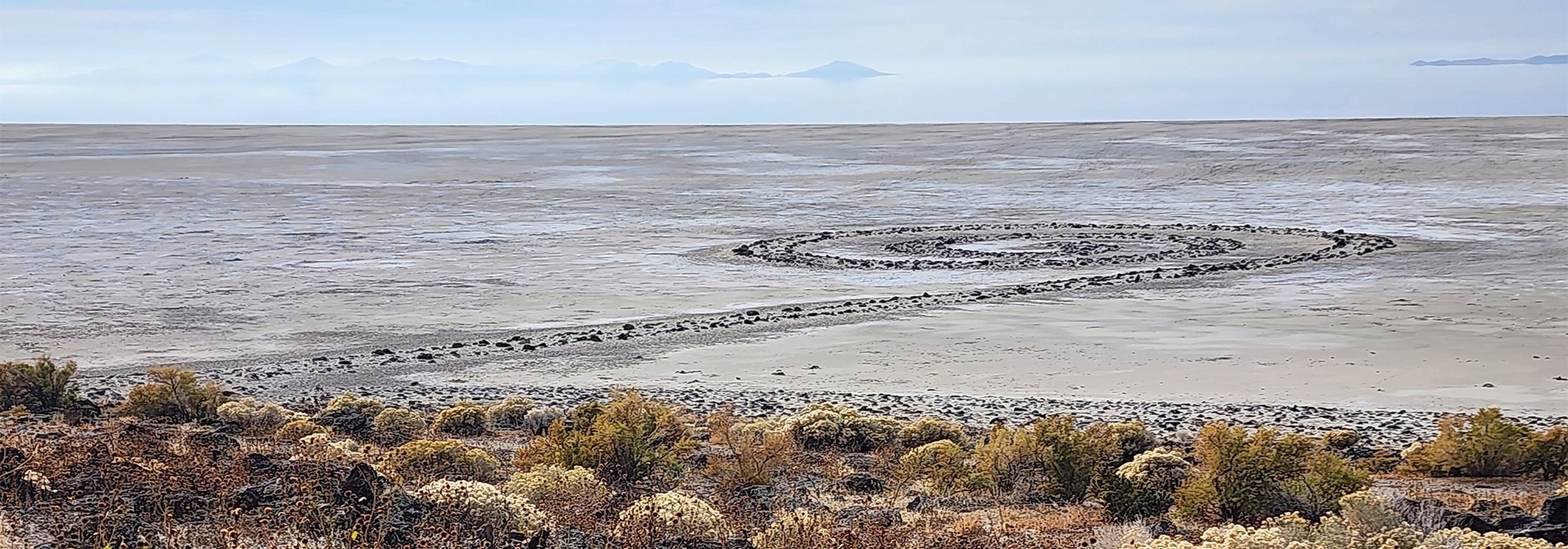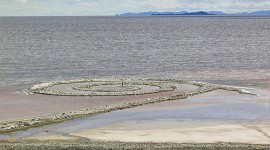Amy Reid, 2024 Cultural Landscape Fellow, on Spiral Jetty
In 2024 Amy Reid earned an M.L.A from Utah State University and served as The Cultural Landscape Foundation's (TCLF) Danette Gentile Kauffman Cultural Landscape Fellow. She is currently an associate landscape architect for the Salt Lake City Department of Public Lands.
Tell us about your connection to artist Robert Smithson’s acclaimed earthwork Spiral Jetty?
I was introduced to Spiral Jetty by my sister, who studied art history at University of California, Berkeley. When the earthwork reappeared in 2002, after being submerged for decades following its completion in 1970, she traveled from San Francisco to Rozel Point, UT just to see it. I knew then it must be pretty special, but I didn’t make the trek from Salt Lake City to visit it myself until the Covid lockdown in 2020. During my work on the nomination I visited Spiral Jetty three more times to conduct field research. Each visit was unique and led to a deeper appreciation of Robert Smithson’s creative vision, the desolate beauty of the Great Salt Lake’s north shore, and the way Spiral Jetty both frames the wider landscape and invites you into it. Studying Spiral Jetty and Smithson has changed how I understand the role of built landscapes, their interaction with nature’s processes, and their power to connect us to place. When Smithson's claim “Nature is never finished” is woven into design as a guiding principle, the landscape, large or small, becomes a powerful connection to the rhythms of life.

As a student of landscape architecture how did you come to choose the potential listing of Spiral Jetty in the National Register of Historic Places as a thesis topic?
The nomination brought together my experience in cultural landscapes, my interest in public art to inspire and engage, and my studies as a graduate student in landscape architecture. In the fall of 2022 my Bioregional Planning seminar focused on finding solutions to the Great Salt Lake’s shrinking shoreline. Reduced water flow into the terminal lake is stressing the ecosystem and threatening the lake’s ability to support millions of migrating birds. In addition, dust from the exposed lakebed may have far-reaching negative economic and health impacts. Ultimately, the lake’s survival will depend on all of us who live in the Great Salt Lake watershed. People will fight for things they know and care about, but so many lack a meaningful connection to the Great Salt Lake. As I considered where opportunities for meaningful connections can occur, I immediately thought of Robert Smithson’s Spiral Jetty. It is one of the only locations on the north shore where people can experience the grandeur of this ancient lake and experience the pink-tinged water that first drew Smithson to Utah.
Did you come to see this quest as usual for the art world? Was the Holt/Smithson Foundation receptive from the start?
I had decided early on that I would not pursue the nomination unless all parties were interested, and from the onset, all were very supportive of the nomination and my efforts. The artwork’s owner, the New York City-based Dia Art Foundation, works very closely with the Holt/Smithson Foundation and local partners, including the Utah Museum of Fine Arts, to steward Spiral Jetty. Dia’s main concern was regarding any restrictions the designation might place on the artwork’s stewardship. Once I explained the honorary nature of the designation, they supported me throughout the year-and-a-half process, even reading the final draft and offering comments along with the Holt/Smithson Foundation. I’m confident the final product offers a well-documented and holistic view of the historical context, artistic inspiration, and impact of this iconic work.
Did you look at other National Register-designated works of land art or environmental art as part of this undertaking? What did you learn from that?
The only other land art listing from the same era as Spiral Jetty is Untitled Earthwork (Johnson Pit #30) by Robert Morris. The Morris piece was added to the National Register of Historic Places just a year before I began pursuing the nomination, and it influenced my decision to move forward. I referred frequently to the nomination as I crafted my own. While both were earthworks, the Robert Morris site was part of the Earthworks: Land Reclamation as Sculpture symposium in 1979. The Morris work is located on one of several former industrial sites selected the King County Arts Commission for artists’ installations; by contrast Spiral Jetty’s location was specifically chosen by the artist. As such, the Great Salt Lake was considered part of the artwork and needed to be fully examined. I experienced many “coincidences,” as I referred to them, while working on the nomination. Last summer I happened to meet one of the authors of the Morris nomination, Kasia Keeley, during my fellowship for TCLF in Seattle. She is a landscape architect at Mithun where I was based. It is interesting to note both land art listings were spearheaded by individuals with backgrounds in landscape architecture.

What does it mean to you that none of the listings to date are by women artists?
I’m confident Spiral Jetty and Untitled Earthwork (Johnson Pit #30) will prompt additional land art nominations by both male and female artists. Many earthworks are just approaching the National Register 50-year listing eligibility threshold. Now is a great time to consider how various works of art, by men and women, whose inspiration and meaning are tied to the natural environment, have impacted broader historical patterns. Women artists like Mary Miss highlighted ecological function, a must for today’s landscapes as we design for climate adaptation. Nancy Holt emphasized our relationship to the cosmos, another way to connect physically and emotionally to the rhythms of nature. The Spiral Jetty and Untitled Earthwork (Johnson Pit #30) designations have demystified the nomination process, making it easier for additional works to be nominated.
What does the designation mean?
While the designation acknowledges Spiral Jetty’s profound impact on American culture and history, it also provides a record of how an artist inspired a new direction for the field of landscape architecture at a crucial moment in time. On a more practical level, the nomination can open funding for surveys and assessments to monitor the work. Lidar could provide data to monitor the earthwork’s composition over time. Finally, I hope the nomination will encourage people who haven't been to the Great Salt Lake to make the journey out to Spiral Jetty where they can walk the spiral back in time and immerse themselves in the wonder of this landscape. Perhaps some will even return from the journey newly motivated to protect this ancient lake, and the millions of migrating birds who depend on it, from the threat of extinction.




